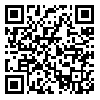Volume 17, Issue 3 (3-2018)
ijdld 2018, 17(3): 147-156 |
Back to browse issues page
Download citation:
BibTeX | RIS | EndNote | Medlars | ProCite | Reference Manager | RefWorks
Send citation to:



BibTeX | RIS | EndNote | Medlars | ProCite | Reference Manager | RefWorks
Send citation to:
Mohamadabadi M S, Aflakseir A. Predicting Self-Care Behaviors Based On Patient-Doctor Relationship And Emotional Distress In Adolescents With Diabetes. ijdld 2018; 17 (3) :147-156
URL: http://ijdld.tums.ac.ir/article-1-5510-en.html
URL: http://ijdld.tums.ac.ir/article-1-5510-en.html
1- Department of Clinical Psychology, School of Education & Psychology, Shiraz University, Shiraz, Iran , salehmo30@yahoo.com
2- Department of Clinical Psychology, School of Education & Psychology, Shiraz University, Shiraz, Iran
2- Department of Clinical Psychology, School of Education & Psychology, Shiraz University, Shiraz, Iran
Abstract: (4637 Views)
Background: The aim of the present research is to predict the self-care behaviors based on emotional distress and physician – patient’s relationship in adolescents with diabetes.
Methods: The research design was correlation and the study population included all adolescents with diabetes at Shiraz city. For this purpose, 198 adolescent patients participated in the study through the convenience sampling method. Research instruments included the Questionnaire of Diabetes Self-management, Emotional Distress Questionnaire and finally Physician–Patient’s Relationship Questionnaire. To analyze the data, the simultaneous multiple regression methods were applied using SPPS (version 17).
Results: Regression analysis showed that emotional distress (β=-0.58, P<0.001) significantly (negative) predicted diabetes self-care behaviors. Also, among the components of emotional distress only barriers to treatment (β=-0.53, P<0.001) significantly (negative) predicted diabetes self-care behaviors. However, results showed that physician–patient’s relationship did not significantly predicted diabetes self-care behaviors.
Conclusion: According to the results, it can be argued that the emotional distress (especially barriers to treatment) variable, play an important role in addressing diabetes self-care behaviors in adolescents.
Methods: The research design was correlation and the study population included all adolescents with diabetes at Shiraz city. For this purpose, 198 adolescent patients participated in the study through the convenience sampling method. Research instruments included the Questionnaire of Diabetes Self-management, Emotional Distress Questionnaire and finally Physician–Patient’s Relationship Questionnaire. To analyze the data, the simultaneous multiple regression methods were applied using SPPS (version 17).
Results: Regression analysis showed that emotional distress (β=-0.58, P<0.001) significantly (negative) predicted diabetes self-care behaviors. Also, among the components of emotional distress only barriers to treatment (β=-0.53, P<0.001) significantly (negative) predicted diabetes self-care behaviors. However, results showed that physician–patient’s relationship did not significantly predicted diabetes self-care behaviors.
Conclusion: According to the results, it can be argued that the emotional distress (especially barriers to treatment) variable, play an important role in addressing diabetes self-care behaviors in adolescents.
Keywords: Self-Care Behaviors, Emotional Distress, Physician – Patient’s Relationship, Diabetes, Adolescence
Type of Study: Applicable |
Subject:
General
Received: 2016/05/21 | Accepted: 2018/03/18 | Published: 2018/10/13
Received: 2016/05/21 | Accepted: 2018/03/18 | Published: 2018/10/13
Send email to the article author
| Rights and permissions | |
 |
This work is licensed under a Creative Commons Attribution-NonCommercial 4.0 International License. |





